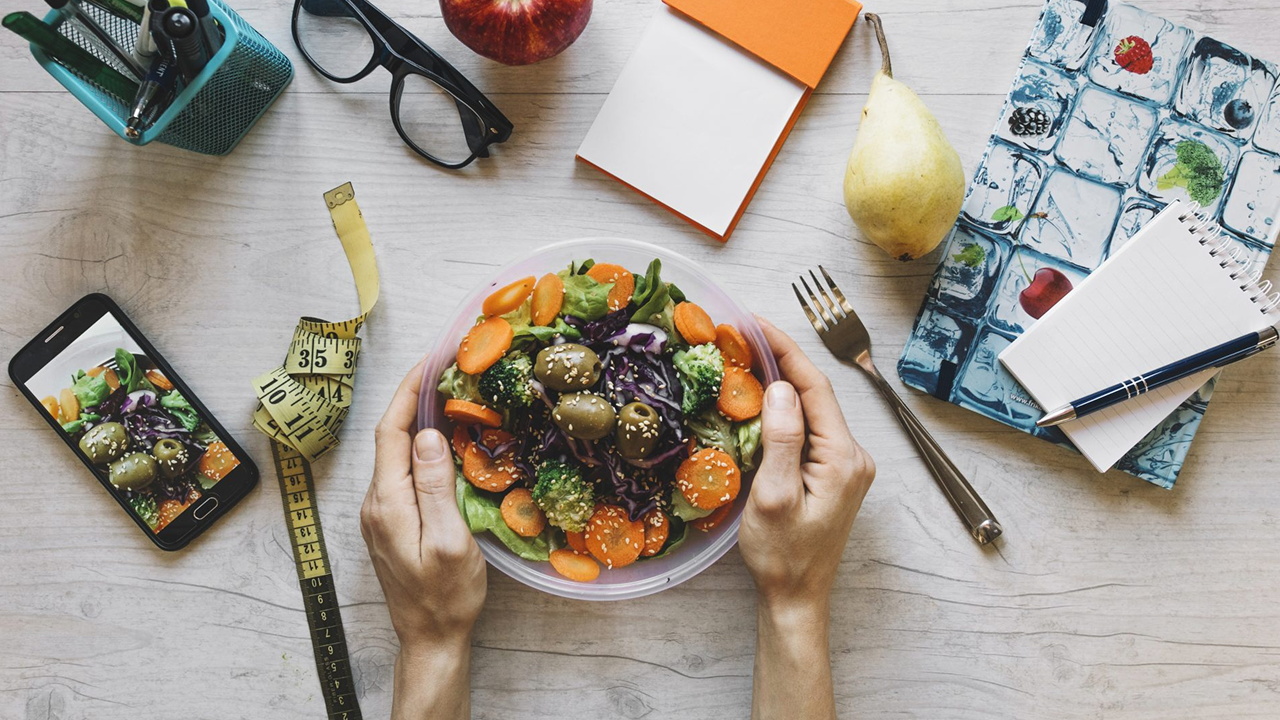Seasonal Trends for SEO: Capitalizing on Summer Traffic

Summer’s coming – time to seas the day.
For many people, summertime means beach days and hiking trips and refreshing drinks in cafés. But for marketers, summer means a change in seasonal SEO trends and seasonal content. Consumer interests and behaviours change with the time of year, so marketing strategies need to adapt as well.
If you want to generate extra traffic and ride the wave of excitement, then you’ll need to capitalize on seasonal marketing. Learn about how seasonality affects marketing, user behaviour, and strategies – and how to prep your business for the summer.
What is Seasonality in Marketing?
To put it simply: seasonality is the idea that seasons, holidays, and events impact consumer behaviours. The time of year influences the popularity of products and activities, and determines (on a general level) what consumers buy and when. Think about how swimsuits become more popular as summer approaches, or how Black Friday makes gadget and appliance purchases surge.
When it comes to search engine optimization (SEO), seasonality includes the changes in search patterns based on the time of year. For example, more people will search for beach vacation options in summer, or cherry blossom viewing spots in spring. And that seasonal SEO data should impact your marketing strategy.
There are two “categories” for seasonality: time-based and event-based. Time-based seasonality encompasses the different seasons in a year (spring, summer, etc) or specific months (Pride Month, Indigenous History Month). Meanwhile, event-based seasonality encompasses holidays such as Valentine’s Day or St. Patrick’s Day.
Why Seasonality Matters for Marketing
It doesn’t matter what product or service you’re offering – seasonal marketing will always matter for your brand. Capitalizing on peak periods for certain trends or themes provides several benefits for your business, both in the short- and long-term.
#1 — Drive traffic to website
Capitalizing on seasonal trends and events makes you visible to users who are searching for relevant keywords. If your content, products, and social media posts match user search intent, then users will visit your platforms. Using seasonal marketing strategies creates opportunities to boost your traffic, acquire new customers, and reinforce loyalty in existing ones. And all that leads to more conversions.
Moreover, anticipating seasonal trends and preparing for changes will give you an advantage over your competitors who are less ready. You’ll be better positioned on search engine results pages (SERPs) and social media, which will show in your website metrics.
#2 — Increase brand relevance
Creating seasonal content shows your relevance to your target audience – that you’re tuned in to their interests and matching their needs. It also increases brand awareness, since people searching for season-specific content and products will come across your company.
#3 — Build authority
Seasonal landing pages will build authority over time, especially if their content is evergreen. Moreover, if other websites and platforms link back to your pages, search engines will consider your content more authoritative. And of course, consistently producing content affiliated with the season will establish your brand as a reliable resource for information, products, or services.
How Seasons Like Summer Affect User Behaviour
Summer brings more opportunities for outdoor experiences, such as camping, swimming, and hiking. Consumers will be searching for summer-specific keywords and content – vacation locations, activity gear and clothing, and seasonal promotions. Conversely, some people might search for off-season promotions for non-summer activities such as skiing or winter tires, since these have lower demand and might be more affordable.
In general, each season, holiday, and event sees changes in user behaviours and priorities. For summer in particular, users may have more free time due to holidays, and may therefore spend more time online. B2B and B2C companies need to take advantage of this by creating engaging and valuable content that matches their audience’s search intent.
For example, a B2B company that sells outdoor equipment can promote a blog post about summer camping. They can then target keywords such as “summer camping gear” and “camping essentials for summer.” Or a B2B business that sells office equipment can promote a seasonal sale with keywords such as “summer discounts for office equipment” and “summer savings on printers.”
It’s also important to optimize your website for users on the go, since people are more out and about during the summer. People rarely bring laptops on trips – they’re more likely to have tablets and mobile phones. Try implementing responsive design, optimizing loading speed, and ensuring your mobile site is easy to navigate.
Understanding Your Audience
It’s crucial to track and understand your audience and their behaviour – in summer and in every other season. You can’t market to consumers effectively if you don’t know what will appeal to them and what they’re looking for. Learn the keywords they’re searching up and the products they’re trying to find, and integrate these factors into your strategies.
You can have all the strategies in the world and yet they won’t be effective if you’re not considering your customer’s motivations and perspectives. Ask yourself why your target audience behaves the way it does – and why they should turn to you for solutions to their needs. Then make that “why” the core message of your marketing.
Start off by identifying your target audience – the group of consumers who are most likely to to buy your product or service, and therefore, the group whom you should target with your ad campaigns. It’s your “audience niche,” or the demographic(s) relevant to your brand. And this audience will influence every marketing strategy you execute.
For example, if you sell plants, then your target audience would be very broad to include anyone who wants to try growing plants in their home or garden. But you can narrow that down further to selling specifically indoor plants, and then your target audience focuses on people who own apartments or homes with no gardens. Then you plan your marketing campaigns accordingly.
There are several strategies for identifying your target audience, including:
- Customer interviews and surveys
- Market research
- Competitor analysis
- Customer personas
- Google Analytics
Preparing for Seasonal Content Marketing
One crucial factor when preparing seasonal marketing campaigns is time. As a brand, it’s essential that you develop your strategies, content, and materials ahead of time. If you start with the season, you’re already behind.
Given that, here are some key tactics for formulating your seasonal marketing strategies.
Conduct keyword research
Good SEO starts with keyword research done ahead of time. Identify the seasonal target keywords for your industry or niche, and their associated keyword density and search volume. You can use various research tools to find high-volume, low-competition keywords and potential long-tail keywords. Some useful tools include:
- Google Trends
- Google Keyword Planner
- SERP Checker
- SEMrush
- Ahrefs
- MOZ
Companies should also monitor industry trends, customer feedback, and social media buzzwords to identify popular keywords and concepts within their target market. You can also look at data from seasons in the previous years to inform your decisions for this year.
Ideally, you should start your keyword and topic research about half a year before the summer season.
Create season-specific content
Once you’ve done your keyword research and identified words or phrases to target, begin creating your marketing material. This can include content such as:
- Themed blog posts
- Social media posts
- Email campaigns
- Landing pages
- Graphics (infographics, etc)
- Memes
Content creation is a key factor in marketing strategies. Brands can utilize content calendars to manage distribution and posting times. Schedule different forms of content for release at optimal times, e.g. something bear-themed for National Black Bear Day (that’s really a thing).
Optimize website with keywords
Revisit your landing and service pages, and begin optimizing them for summer. Update descriptions, create summer-specific landing pages, and begin prep for internal linking for keywords. It’s also a good time to switch to visuals (images and video) that are summer-related.
For businesses selling products, now is the time to launch your summer collections. Promote summer-related items on your landing page or put together a seasonal collection. You can even update your website’s overall theme to reflect the summer vibes.
Begin uploading and indexing
Around 4 months before the summer (or whichever season/event you’re targeting), start uploading content such as blog posts. SEO can take 3–6 months to take effect and reflect in your metrics, you should move early. This gives search engines like Google time to crawl and index your pages.
Within the next few weeks and months, search engines will begin crawling for topics and discovering pages to index and rank. You want to give your content the best chance at being recognized by the search engine algorithms, which will identify your content as relevant and rank it well.
Strategies for Promoting Seasonal Content
Once you’ve finished your preparations for summer marketing, it’s time to start promoting your content. There are several strategies you can use – and combining them could boost effectiveness beyond the sum of their parts.
#1 — Social media promotions
One of the primary strategies for promoting your content is using social media. The content you promote on your website, email list, blog, and other channels should also go to your social media platforms. It’s an effective way to drive traffic to your website and call more attention to your brand – all the more so if you use summer-related trending topics, memes, and trends effectively.
In 2021, beverage giant Coca-Cola launched its summer marketing campaign, “Summer Tastes Better.” It took to social media to introduce the new packaging that featured short poems about classic summer activities: baseball games, backyard BBQs, beach trips. The idea was to welcome back summertime rituals that people missed during the COVID-19 lockdowns, allowing them to “open up” these summer moments together.
#2 — Influencers and collaborations
Many brands are now using influencer marketing and brand-to-brand collaborations to reach more customers and boost their brand presence. Brands can partner with influencers whose niche matches the concepts that the brand will use in its summer marketing. Alternatively, companies can link up with other businesses in the same industry or in an industry relevant to their marketing approach.
Nike released its Unlimited Series in 2019 in the lead-up to the Summer Olympics. The series highlighted several top athletes, including gymnastics prodigy Simone Biles. The Simone Biles advert featured a voice-over of Biles’s mother talking about Biles growing up and transforming into the historic athlete she is today.
#3 — Games and apps
Creating games and apps is an effective way to boost user engagement, since it drives people to download the app and increases brand awareness as a result. Come up with challenges or puzzles so users can interact with the content and with your brand in a unique, new way.
Genshin Impact, for example, creates web mini-games to promote new updates and releases. The mini-games are related to the in-game content, and allow users a fun and novel experience. There are even options to share the results of the mini-game to social media, improving Genshin’s reach and encouraging non-players to download the game and play. For the summer, they launched web mini-games called “Mesmerizing Dream at Sea,” connected to their beach-themed Golden Apple Archipelago game content.
#4 — Video content
Videos are now the second-most popular type of content on social media to increase engagement. Platforms like Instagram and Facebook incentivize posting short videos or reels, while TikTok has grown as a marketing tool. The benefit of video content is that it keeps users on pages longer, and communicates messages in a way that 2D images or text cannot.
Slack launched in 2013 for businesses to transform their professional and organizational communications. Then in 2014, they approached Sandwich Video – a highly-rated video production company – to create a video to promote Slack. The resulting ad, “So Yeah, We Tried Slack…,” is a humorous take on how Sandwich didn’t believe in Slack at first because “products like that never work”… only to eventually be won over.
#5 — Email marketing
The general perception is that most people let marketing emails wallow in their inboxes – but that’s only true for brands that use email marketing ineffectively. Good email marketing is more than 40x more effective at pulling in new customers versus social media, and has 3x the conversion rate.
Take Starbucks and their email campaign as an example. They frequently use GIFs to make the email visuals more unique and attractive, since these stand out from the usual text or static content from other brands. They also emphasize the exclusivity of their offers, which are often personalized to each customer.
Moving Into the Off-Season
One thing to do that will help you during the off-season is to monitor and analyze your website and campaign performance over summer. That’ll tell you what strategy worked and what didn’t, and what keywords peaked versus what fell off. It’ll prime you for the next time summer rolls around and you’ll once again have to adapt your marketing plans to the season.
You can also hold a marketing audit to evaluate the performance of your brand’s advertising and marketing campaigns. This will give you an overview of their effectiveness and impact, and whether you’re using optimal practices.
People have strong reactions to different seasons and events, especially ones that resonate with their own likes and wants. To make the most of your marketing efforts, you’ll need to leverage those reactions and connections to reach your audience. Strategize for the summertime and beyond – water you waiting for?
Schedule a free consultation with Kika to prep your seasonal marketing strategies today!






